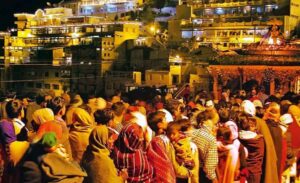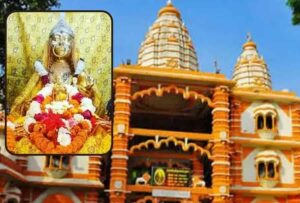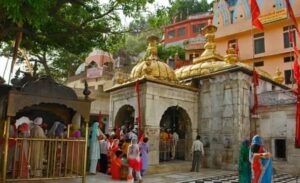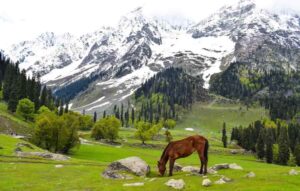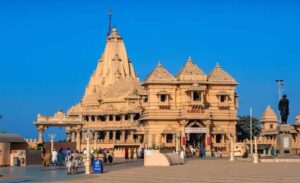Grishneshwar Temple Timings
Grishneshwar Temple, also known as the Grishneshwar Jyotirlinga Temple, holds significant religious importance for Hindus. Located in the village of Verul, near Ellora Caves in the state of Maharashtra, India, this temple is dedicated to Lord Shiva and is one of the twelve Jyotirlingas, which are considered the holiest shrines of Lord Shiva in India. In this comprehensive guide, we will explore Grishneshwar Temple in detail, including its history, architecture, timings, festivals, rituals, and much more.
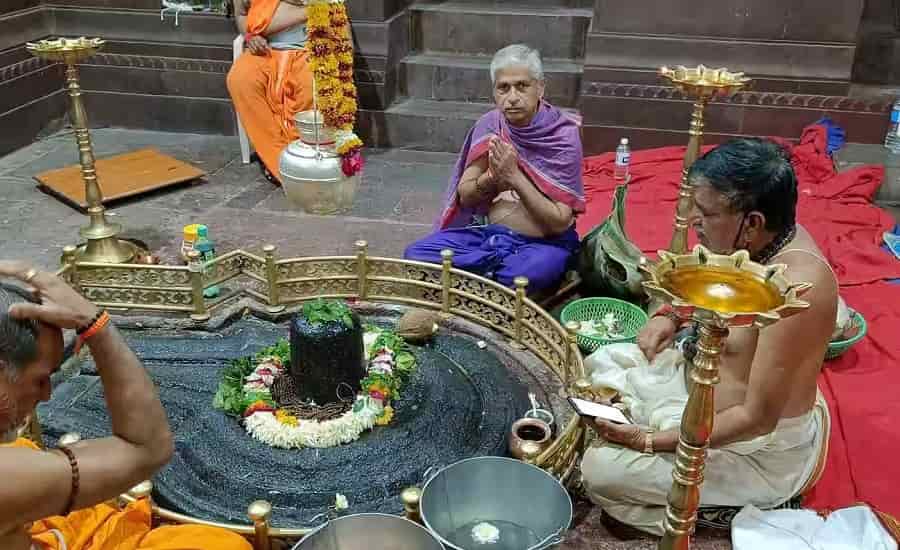
Grishneshwar Temple Timings
Grishneshwar Temple follows a specific schedule for its daily rituals and darshan (viewing of the deity). The temple timings are as follows:
Darshan:
- Normal Days: 5:30 AM – 9:30 PM
Shravan Maas: 3:00 AM – 11:00 PM (Please note that during Shravan, darshan may take 6-8 hours due to heavy rush).
Afternoon Pooja: 1:00 PM – 1:30 PM - Evening Pooja: 4:30 PM – 5:30 PM
Sevas and Poojas at Grishneshwar Temple
The Grishneshwar Temple offers various sevas (services) and poojas (rituals) to devotees. Here are the timings for these services:
- Mangal Arati: 4 AM
- Jalhari Sanghan: 8 AM
- Maha Prashad: 12 PM
- Jalhari Sagan: 4 PM
- Evening Aarti: 7:30 PM
- Night Aarti: 10 PM
These sevas and poojas provide devotees with the opportunity to participate in the temple’s daily rituals and seek the blessings of Lord Shiva. Please plan your visit accordingly, keeping in mind the specific timings for each service.
Entry Fee: No entry fee
Festivals Celebrated at Grishneshwar Temple
Grishneshwar Temple celebrates several festivals with great fervor and devotion. Some of the major festivals observed at the temple include:
Maha Shivaratri: Maha Shivaratri is one of the most significant festivals dedicated to Lord Shiva. Devotees flock to Grishneshwar Temple on this auspicious day to offer prayers and perform special rituals.
Ganesh Chaturthi: The birth anniversary of Lord Ganesha, the elephant-headed god, is celebrated with enthusiasm at the temple. Devotees bring idols of Lord Ganesha for immersion in the temple pond during this festival.
Krishna Janmashtami: The birthday of Lord Krishna is celebrated with devotional songs, dance performances, and other cultural events at Grishneshwar Temple.
Shravan Maas: The entire month of Shravan, according to the Hindu calendar, is dedicated to Lord Shiva. Devotees visit the temple in large numbers during this month to offer prayers and perform abhishekam (ritual bathing) of the Jyotirlinga.
Other Hindu Festivals: Grishneshwar Temple also observes other Hindu festivals like Diwali, Holi, and Navratri with special rituals and celebrations.
These festivals not only add vibrancy to the temple but also provide an opportunity for devotees to immerse themselves in the spiritual atmosphere and seek the blessings of the divine.
Rituals and Puja at Grishneshwar Temple
The daily rituals at Grishneshwar Temple are performed with great devotion and precision. Some of the significant rituals and pujas include:
Maha Abhishekam: This is a grand ritual in which the Grishneshwar Jyotirlinga is bathed with various sacred substances, including milk, honey, ghee, and water. Devotees can participate in this special abhishekam.
Aarti: The temple conducts several aarti ceremonies throughout the day, including the Mangal Aarti in the morning and the Shringar Aarti in the evening. These aartis are accompanied by the ringing of bells and chanting of mantras.
Prasad Distribution: Prasad, blessed food offered to the deity, is distributed to devotees after the completion of rituals. It is considered auspicious and is part of the temple’s tradition.
Special Pujas: Devotees have the option to perform special pujas and rituals within the temple premises. These pujas may include Rudrabhishekam and Laghu Rudra Pujas, which are conducted to seek Lord Shiva’s blessings for specific purposes.
Tips for Visiting Grishneshwar Temple
Here are some tips for visiting Grishneshwar Temple:
Dress Modestly: It is advisable to dress modestly and respectfully when visiting the temple. Wearing appropriate attire, such as traditional Indian clothing, is appreciated.
Footwear: Shoes are not allowed inside the temple complex. There are designated areas or stalls outside the temple where you can leave your shoes safely.
Mobile Phones and Cameras: Ensure that you follow the temple’s guidelines regarding the use of mobile phones and cameras. Photography may be restricted in certain areas.
Respect Traditions: Follow the temple’s customs and traditions, such as offering prayers and respects to the deity, and participating in the rituals with reverence.
Donate to the Temple: If you wish to support the temple and its activities, you can make voluntary donations. These donations are often used for the maintenance and development of the temple.
Plan Your Visit: Check the temple’s official website or contact the authorities to confirm the latest timings and any special events or festivals taking place during your visit.
Grishneshwar Temple offers a spiritual and cultural experience that attracts devotees and tourists alike. The serene atmosphere, rich history, and divine presence make it a must-visit destination for anyone seeking solace and spiritual enlightenment.
Also Read:

